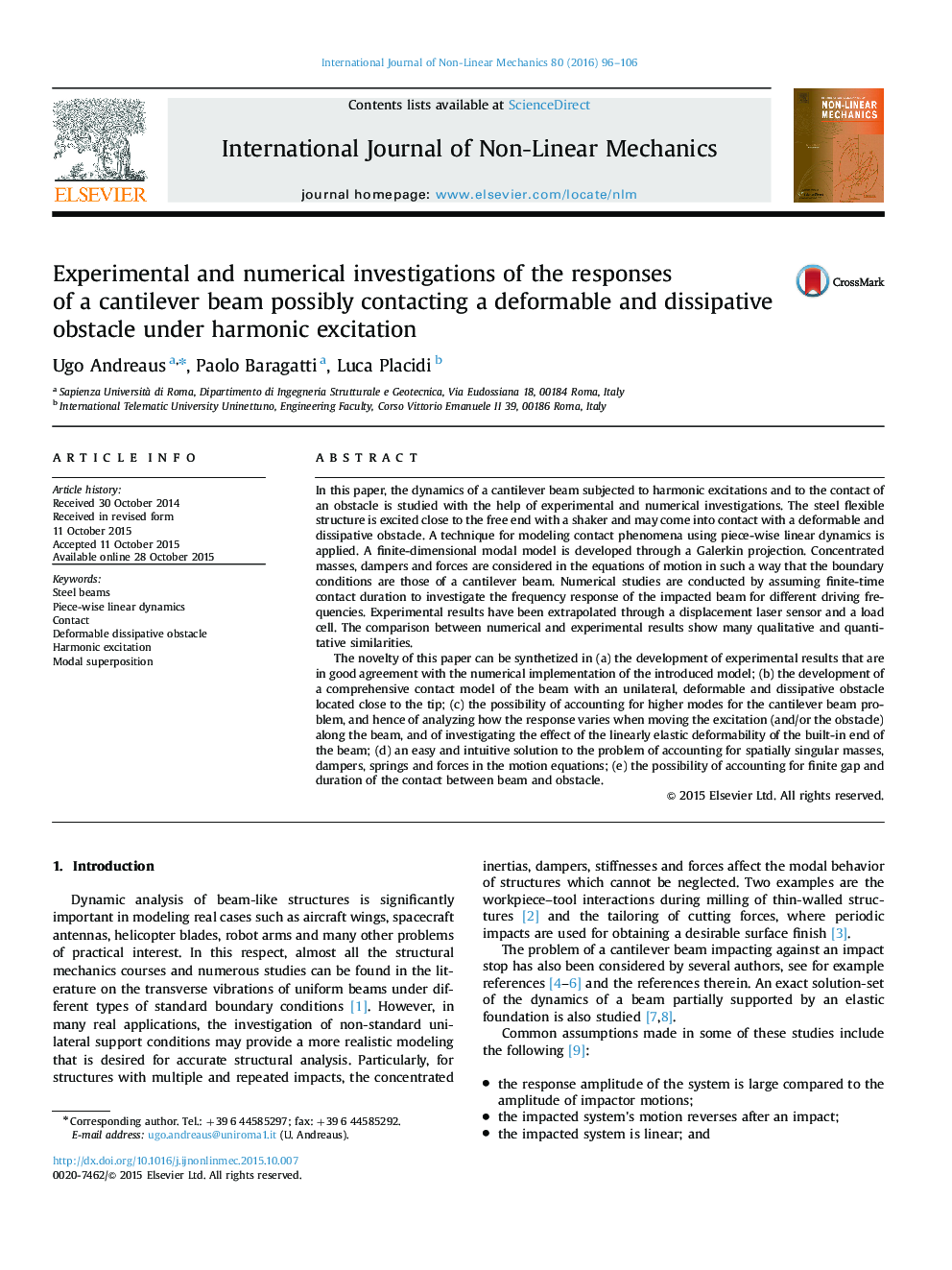| Article ID | Journal | Published Year | Pages | File Type |
|---|---|---|---|---|
| 784908 | International Journal of Non-Linear Mechanics | 2016 | 11 Pages |
•Unilateral conditions may provide a realistic modeling in many real applications.•A cantilever beam with deformable and dissipative obstacle is considered.•Experimentally recorded signals from the beam tip and obstacle are considered.•Higher order modes and repeated impacts with finite durations are considered.•The obstacle is located at a small finite distance from the beam.•Concentrated masses, dampers and forces along the beam axis are contemplated.•Heaviside functions are used for the beam-bumper system interaction.
In this paper, the dynamics of a cantilever beam subjected to harmonic excitations and to the contact of an obstacle is studied with the help of experimental and numerical investigations. The steel flexible structure is excited close to the free end with a shaker and may come into contact with a deformable and dissipative obstacle. A technique for modeling contact phenomena using piece-wise linear dynamics is applied. A finite-dimensional modal model is developed through a Galerkin projection. Concentrated masses, dampers and forces are considered in the equations of motion in such a way that the boundary conditions are those of a cantilever beam. Numerical studies are conducted by assuming finite-time contact duration to investigate the frequency response of the impacted beam for different driving frequencies. Experimental results have been extrapolated through a displacement laser sensor and a load cell. The comparison between numerical and experimental results show many qualitative and quantitative similarities.The novelty of this paper can be synthetized in (a) the development of experimental results that are in good agreement with the numerical implementation of the introduced model; (b) the development of a comprehensive contact model of the beam with an unilateral, deformable and dissipative obstacle located close to the tip; (c) the possibility of accounting for higher modes for the cantilever beam problem, and hence of analyzing how the response varies when moving the excitation (and/or the obstacle) along the beam, and of investigating the effect of the linearly elastic deformability of the built‐in end of the beam; (d) an easy and intuitive solution to the problem of accounting for spatially singular masses, dampers, springs and forces in the motion equations; (e) the possibility of accounting for finite gap and duration of the contact between beam and obstacle.
